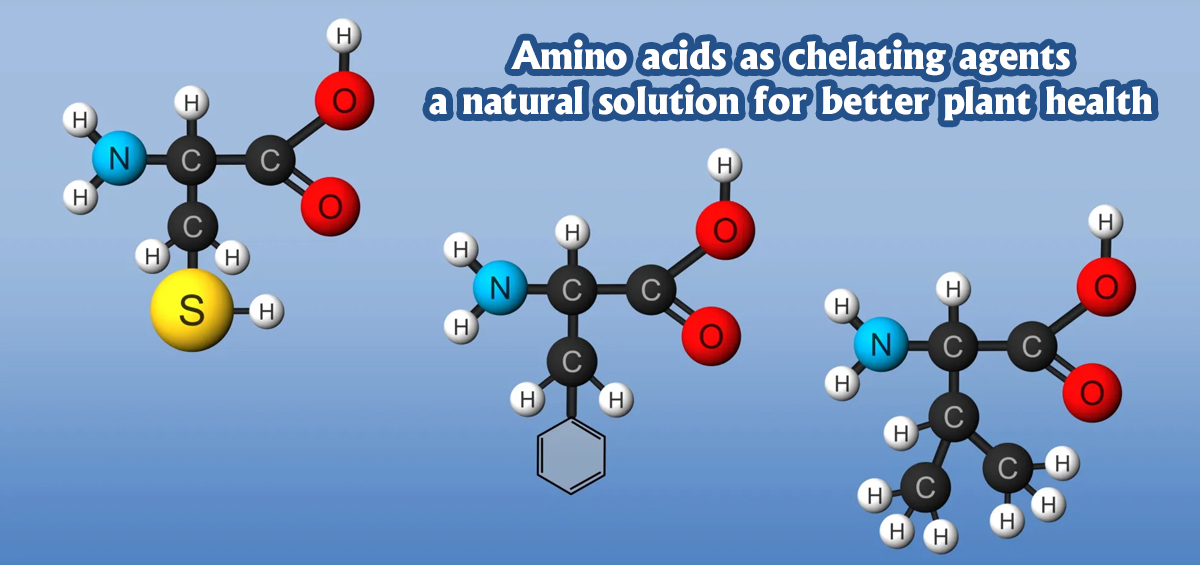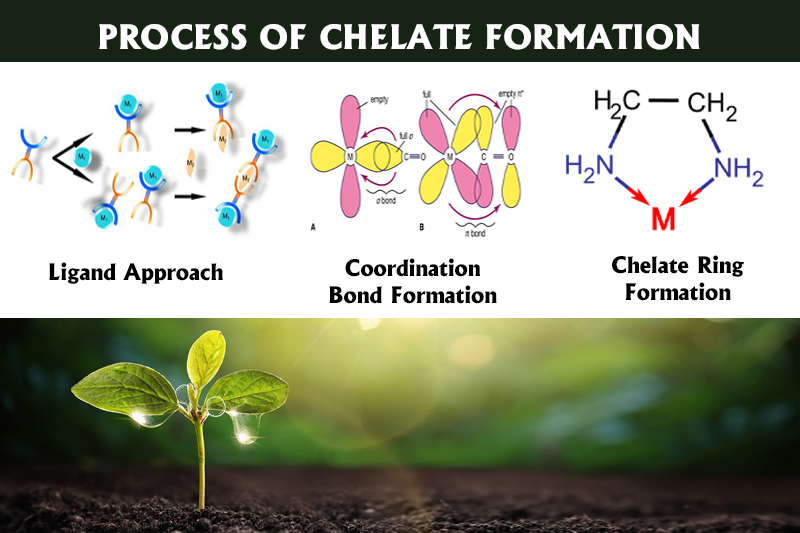Chelation is a chemical process where a substance forms a complex with a metal ion, effectively binding it and increasing its bioavailability. This process is vital in agriculture because many essential nutrients, such as iron, manganese, and zinc, can become insoluble in soil, making them inaccessible to plants.
Chelating agents are compounds that can bind to these metal ions, preventing their precipitation and ensuring their availability for plant roots. While synthetic compounds have historically been used as chelators, natural amino acids have gained prominence as a more sustainable and effective alternative.

Amino acids, with their versatile functional groups, are exceptional chelating agents. The amino group (-NH 2 ) and the carboxyl group (-COOH), both found in amino acids, can serve as donor atoms, creating stable complexes with various metal ions. Furthermore, the side chains of certain amino acids, like histidine, cysteine, and glutamic acid, have additional coordinating groups that can bolster their chelating capacity.
1. Ligand Approach: The amino acid molecule, serving as the ligand, approaches the metal ion.
2. Coordination Bond Formation: The functional groups of the amino acid, such as the amino group and the carboxyl group, donate electron pairs to the metal ion, forming coordinate bonds.
3. Chelate Ring Formation: These coordinate bonds create a ring-like structure (chelate) around the metal ion.
4. Side Chain Interactions: Depending on the specific amino acid, its side chain can also participate in chelation. For instance, histidine, with its imidazole side chain, can form strong coordinate bonds with metal ions.

Functional groups determine chelating ability.
Higher charged and small-sized metal ions tend to form strong chelates. Also, hard metal ions (e.g., alkali and alkaline earth metals) tend to form stronger
chelates with hard donor atoms (e.g., oxygen and nitrogen)
Plant Species, Growth Stage, and Environmental factors like temperature and humidity affects the rate of chelation and the stability of the chelate.
pH and Organic Matter influence the chelation process of amino acids.
Foliar sprays can provide a direct source of chelating agents to the plant.
By understanding these factors, researchers and farmers can optimize the use of amino acids as chelating agents in plants.